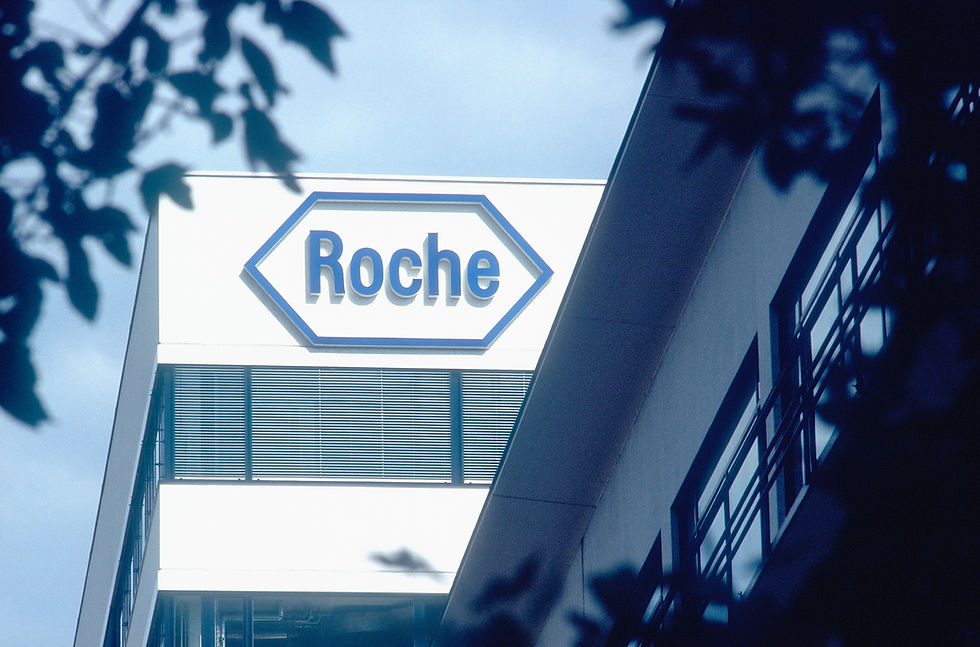Roche launches the cobas Plasma Separation Card to increase access to HIV testing for patients livin
- Sanjay Trivedi
- Jan 5, 2018
- 4 min read

New technology allows better testing and monitoring of HIV patients living in remote settings
For the first time, patient plasma samples no longer need refrigeration during transport to the lab
Card meets the World Health Organization sensitivity requirement for determining HIV treatment
Roche has announced the launch of the cobas® Plasma Separation Card. This new solution is a stable and easy-to-use sample collection device for HIV plasma viral load testing. By providing a small amount of a patient’s blood from a fingertip, this specially designed card simplifies blood collection and sample transportation.
Traditionally, plasma viral load results required blood samples to be cooled during transport to the lab. The new cobas Plasma Separation Card fundamentally changes the way plasma samples are taken and processed. The card allows for reliable quantitative testing of patients with HIV living in remote areas - even areas of extreme heat and humidity - while meeting WHO requirements for determining HIV viral load prior to setting treatment.
“With the launch of the cobas Plasma Separation Card, we strengthen Roche’s ongoing commitment to providing life-saving diagnostics in the fight against HIV and AIDS," said Roland Diggelmann, CEO Roche Diagnostics. “This card will improve access and increase HIV diagnostics scaling up efforts to further the critical work of our many healthcare partners in eradicating the HIV/AIDS epidemic.”
"The cobas Plasma Separation Card is a very impressive innovation", said Alan Staple, Head of Global Markets Team at The Clinton Health Access Initiative. "Coupled with the successful Global Access Program, this will make a significant contribution to extending both the reach and accuracy of HIV viral load testing for underserved populations".
The cobas Plasma Separation Card will be added to the Roche Global Access Program as a solution to help expand access to diagnostics in countries hardest hit by HIV. In partnership with the Joint United Nations Programme on HIV/AIDS (UNAIDS), the Clinton Health Access Initiative (CHAI), Unitaid, the U.S. President’s Emergency Plan For AIDS Relief (PEPFAR) and the Global Fund to fight AIDS, TB and Malaria, Roche has been working to increase access to HIV diagnostic solutions to achieve the UNAIDS 90-90-901 goal to improve people knowing their status, getting on HIV therapy, and suppressing the virus from replicating.
The cobas Plasma Separation Card is being launched in countries accepting CE-Mark certification, for use with the COBAS AmpliPrep®/COBAS TaqMan® HIV-1 and cobas 6800/8800 HIV-1 Tests.
About the plasma separation card
The cobas plasma separation card provides the only CE-marked plasma sample collection devise which meets the World Health Organization sensitivity standard of < 1000 cp/mL. It is stable under high heat and humid conditions and provides results that correlate well to traditional plasma based testing which is considered the gold standard sample type for monitoring patients response to treatment.
About Roche’s Tradition of Commitment to HIV Care
In 2014, Roche announced, the Global Access Program for increased access to HIV diagnostics. Roche partnered with national governments, local healthcare facilities, communities and international agencies, including UNAIDS, CHAI, Unitaid, the U.S. President’s Emergency Plan for AIDS Relief (PEPFAR), Global Fund, and Centres for Disease Control (CDC), to establish programs that would go beyond providing diagnostic tests. Since its inception, the program has expanded substantially in menu and geographic footprint to provide increased access to HIV diagnostics at affordable pricing for qualifying organizations in 82 eligible countries with the highest disease burden.
Roche also inaugurated the Global Surveillance Program in 1998 at the International AIDS Conference in Geneva. Initially designed to monitor changes in the HIV-1 genomic sequence, the Program and its database have since expanded to include thousands of genomic sequences for multiple viruses, including: HCV, HBV and WNV, in the world’s most relevant geographic regions. The Program’s efforts have played a monumental role in helping to maintain and improve the reliability of molecular assays.
About HIV-1
According to the World Health Organization (WHO), there are over 36 million people living with HIV around the world. Only 60% of those people know their HIV status. Just 17 million people are receiving antiretroviral therapy and of those, only 38% are virally suppressed. In 2014, 2.5 million people became newly infected with HIV worldwide and 2.1 million people were newly infected in 2015.
Diagnosis, highly active antiretroviral treatment (HAART) and viral load tests which determine the amount of circulating HIV, have all steadily increased life expectancy for HIV infected people.
About the cobas 6800/8800 System
The cobas 6800 and cobas 8800 systems are fully integrated, automated solutions that introduce a new standard for routine molecular testing in the areas of viral load monitoring, donor screening, women’s health and microbiology. Based on Nobel prize-winning PCR technology, the systems are designed to deliver full automation, increased throughput and faster turnaround time, providing users with greater flexibility to increase overall workflow efficiencies.
The systems provide up to 96 results in less than 3.5 hours and a total of 384 results for the cobas 6800 System and 960 results for the cobas 8800 System in an eight-hour shift. Both make it possible for labs to perform up to three tests in the same run with no pre-sorting required. The systems also enable up to eight hours (cobas 6800) and four hours (cobas 8800) of walk-away time with minimal user interaction.
Additional molecular cobas assays for use on the cobas 6800/8800 Systems include: HIV-1, HIV-1/HIV-2; HCV; HBV; CMV; HPV and CT/NG plus three next-generation assays for donor screening: cobas MPX, WNV and HEV.







Comments